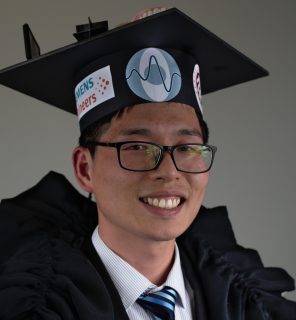Yixing Huang
Consistency Conditions, Compressed Sensing and Machine Learning for Limited Angle Tomography
Cone-beam computed tomography (CBCT) is a widely used imaging technology for medical diagnosis and interventions nowadays. Compared with conventional 2-D X-ray images, 3-D volumes reconstructed by CBCT provide cross sectional images and offer much better visualization of patients’ anatomical structures and disease information. In clinical applications, angiographic C-arm devices are commonly used to acquire 3-D images for image guided therapies. To acquire necessary data for image reconstruction, typically a short scan is performed. However, in practice, the gantry rotation of a C-arm system might be restricted by other system parts or external obstacles. In these cases, the limited angle reconstruction problem arises. Image reconstruction from data acquired in an insufficient angular range is called limited angle tomography. Due to missing data, artifacts, typically in the form of streaks, will degrade image quality, causing boundary distortion, edge blurry, and intensity bias. These artifacts may lead to misinterpretation of images. Therefore, artifact reduction in limited angle tomography has essential clinical value.
In the course of this thesis, various algorithms are proposed to deal with data insufficiency in limited angle tomography. The first category of algorithms are to restore missing data based on data consistency conditions. Specifically, iterative Papoulis-Gerchberg algorithms based on the well known Helgason-Ludwig consistency condition (HLCC) and Fourier consistency conditions of sinograms and a regression-filtering-fusion method based on HLCC are proposed. These algorithms are able to reduce most artifacts for the Shepp-Logan phantom and a clinical image. However, it is suited for parallel-beam limited angle tomography only since HLCC is derived in parallel-beam computed tomography.
The second category of algorithms are to use compressed sensing technologies. The iterative reweighted total variation (wTV) algorithm is adapted for the use in limited angle tomography. While it is able to reduce small streaks well, it is rather inept at reducing large streaks due to scale limitation. Therefore, two implementations of scale-space anisotropic total variation (ssaTV) are proposed to overcome the limitations of wTV. Both ssaTV implementations take the advantage of scale-space optimization and the anisotropic distribution of streak orientations in limited angle tomography. Therefore, they both reduce streak artifacts more effectively and efficiently than wTV.
The last category of algorithms are using machine learning techniques, including traditional machine learning and deep learning. In the traditional machine learning part, reduced error-pruning tree (REPTree) is proposed to predict artifacts from extracted mean-variance-median, Hessian, and shift variant data loss features. Although REPTree achieves very good performance on the validation Shepp-Logan data, it still requires further improvement for clinical applications. Instead, deep learning, particularly the U-Net, achieves very impressive results in 120-degree cone-beam limited angle tomography on clinical data. However, its robustness is still a concern. Our experiments demonstrate that the U-Net is sensitive to Poisson noise and adversarial examples. The robustness to Poisson noise can be improved by retraining on data with noise. However, the retrained U-Net model is still susceptible to adversarial examples. To make the U-Net robust, data consistency deep learning reconstruction is proposed, which utilizes deep learning reconstructions as prior images and further constrains them consistent to measured projection data to improve image quality.
